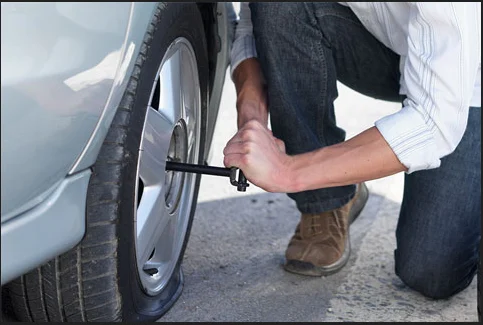Most car owners will find themselves by the side of the road with a tire failure at some point due to a screw, nail, or other sharp objects. These punctures often lead to a loss of air, which can make driving unsafe and/or impossible. If you don't have access to a spare tire and you're stranded on the side of the road due to a flat tire, there is a solution that doesn't involve calling a tow truck for help.
Tire sealants are a great way to quickly repair a slow-leaking tire, and they can also be used for preventative measures. You can easily store this product in the trunk or other area of your vehicle for emergencies. The best tire sealants are affordable and easy to use, but they're not all created equally. We did the research and found some of the best options, so you'll be prepared the next time the unexpected occurs.
Best Overall
Slime Emergency Tire Repair Sealant
Check Latest Price
Summary
A strong and fast-acting tire sealant capable of filling 1/4-inch punctures.
Best Value
Fix-A-Flat Tire Sealant and Car/SUV Tire Inflator
Check Latest Price
Summary
Designed for cars and SUVs, this tire sealant is 24 ounces and can be used on extra-large tires. It fixes punctures up to 1/4-inch.
Honorable Mention
TireJect Tire Sealant Kit
Check Latest Price
Summary
This formula is available in 10, 20, or 40 ounces as well as a one-gallon container. It can fill punctures up to 3/8-inch.
It can fill punctures up to 3/8-inch.
Our reviews are driven by a combination of hands-on testing, expert input, “wisdom of the crowd” assessments from actual buyers, and our own expertise. We always aim to offer genuine, accurate guides to help you find the best picks.
Learn more
I took several factors into consideration when choosing the best tire sealants. First, I focused on well-known brands that have a reputation for producing high-quality products. I also looked at the effectiveness of each item. Using user testimonials as a reference, I compared how each sealant performed in real-world conditions in order to determine how well they functioned overall.
Using user testimonials as a reference, I compared how each sealant performed in real-world conditions in order to determine how well they functioned overall.
I included products that are both solutions to a puncture and I made sure to pick products that can be used on a variety of different tires, from passenger cars to larger pickup trucks. I also included items in a wide range of prices to suit a variety of budgets. For more information on our methodology, go here.
Slime Emergency Tire Repair Sealant
While the name may be gross, Slime tire sealant is one of the most effective sealants on the market.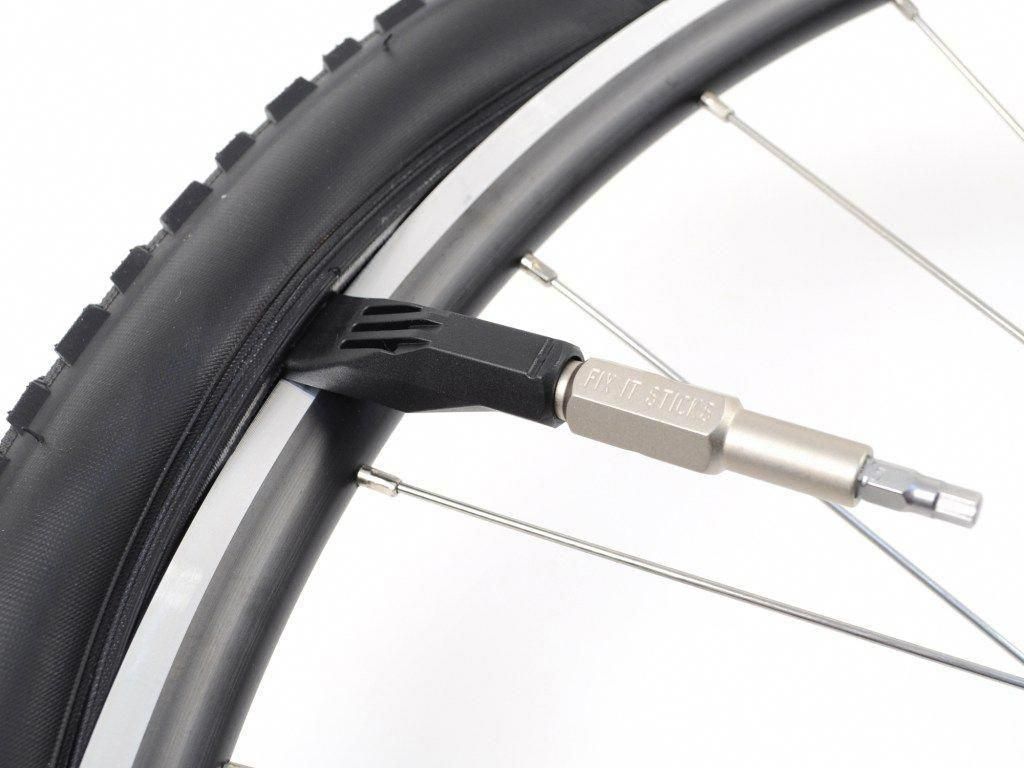 It is capable of filling punctures up to 1/4-inch, which is around the size of a normal screw or nail. It’s a great preventative measure to help fight against the possibility of full tire blowouts.
This small and powerful formula is fit for cars, trucks, SUVs, ATVs, trailers, and RVs. Plus, it’s compact enough to take with you, no matter where you plan on driving. One of the best features we found is that the bottle comes with its own valve core removal tool, giving you easy access to prevent leaks in your tires.
However, if you are using it for a car or trailer, there is a restriction on how fast you should drive. It’s only effective at speeds up to 65 mph, and should only be used as a quick fix if you tend to drive at speeds around this mark.
It is capable of filling punctures up to 1/4-inch, which is around the size of a normal screw or nail. It’s a great preventative measure to help fight against the possibility of full tire blowouts.
This small and powerful formula is fit for cars, trucks, SUVs, ATVs, trailers, and RVs. Plus, it’s compact enough to take with you, no matter where you plan on driving. One of the best features we found is that the bottle comes with its own valve core removal tool, giving you easy access to prevent leaks in your tires.
However, if you are using it for a car or trailer, there is a restriction on how fast you should drive. It’s only effective at speeds up to 65 mph, and should only be used as a quick fix if you tend to drive at speeds around this mark.
Check Latest Price
This simple small yet effective tire sealant is capable of making sure a large tire holds its air until you get it properly taken care of.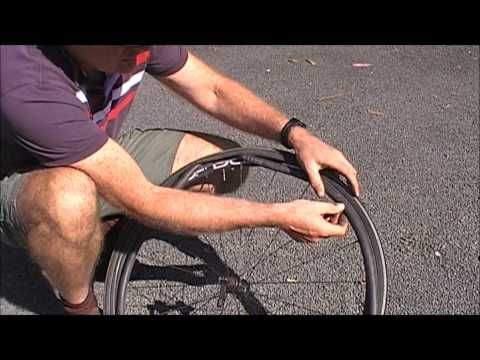 Its compact bottle means you can take it with you and quickly use it in case you have a tire emergency. You can easily check what tires Fix-A-Flat fits by checking out the guide on their website.
It is able to fully block a puncture up to 1/4-inch. While it isn’t a permanent fix, it will last long enough for you to drive it to the shop or back home. It’s easy to attach to your tire nozzles as well, giving you more time to get back on the road and less time worrying about how much air you’ve lost. It’s nontoxic, noncorrosive, and nonflammable as well, making it safe for the environment. It’s also safe to use on cars with a TPMS monitoring system.
While it may be fast-acting, you will have to move the car to the right position in order for the compound to take hold effectively. That means you have to make sure to park where the puncture is at the six o’clock angle, which can be difficult to do by yourself.
Its compact bottle means you can take it with you and quickly use it in case you have a tire emergency. You can easily check what tires Fix-A-Flat fits by checking out the guide on their website.
It is able to fully block a puncture up to 1/4-inch. While it isn’t a permanent fix, it will last long enough for you to drive it to the shop or back home. It’s easy to attach to your tire nozzles as well, giving you more time to get back on the road and less time worrying about how much air you’ve lost. It’s nontoxic, noncorrosive, and nonflammable as well, making it safe for the environment. It’s also safe to use on cars with a TPMS monitoring system.
While it may be fast-acting, you will have to move the car to the right position in order for the compound to take hold effectively. That means you have to make sure to park where the puncture is at the six o’clock angle, which can be difficult to do by yourself.
When ordering this tire sealant, you have the option of choosing 10, 20, or 40 ounces.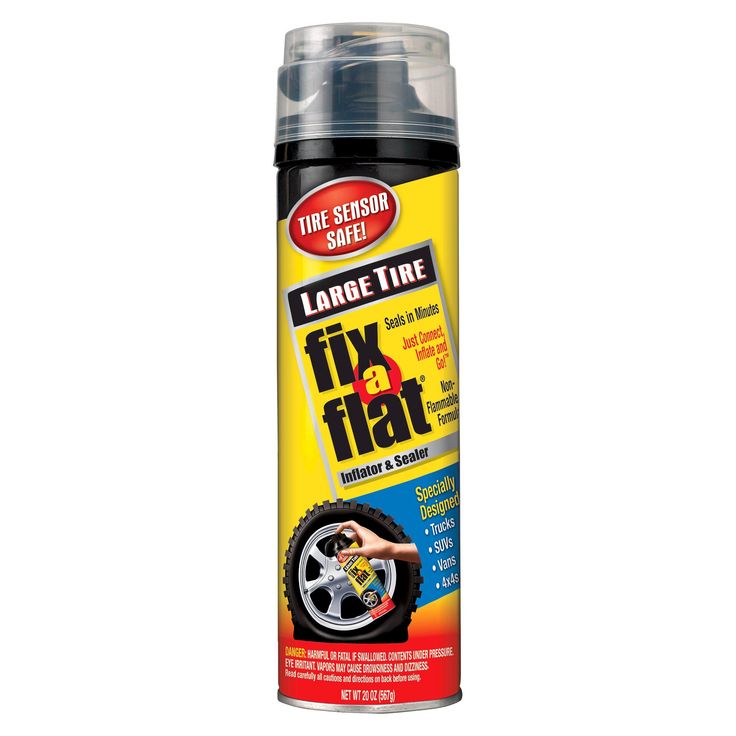 You can also choose to order a one-gallon container. The sealant is a liquid rubber mixture that contains tire particles and Dupont Kevlar fibers. Every 10 ounces of sealant comes with one bladder bag and one injector tool. You can use this repair kit to repair punctures in your tires from screws, nails, thorns, or anything else. The sealant only works on punctures that are up to 3/8-inch.
You’ll find this sealant system is easy to use, thanks to the included injector tool. You connect it to your valve stem for a mess-free installation. You can even install this sealant on all four of your tires and prevent future flats for the next year.
You can also choose to order a one-gallon container. The sealant is a liquid rubber mixture that contains tire particles and Dupont Kevlar fibers. Every 10 ounces of sealant comes with one bladder bag and one injector tool. You can use this repair kit to repair punctures in your tires from screws, nails, thorns, or anything else. The sealant only works on punctures that are up to 3/8-inch.
You’ll find this sealant system is easy to use, thanks to the included injector tool. You connect it to your valve stem for a mess-free installation. You can even install this sealant on all four of your tires and prevent future flats for the next year.
This tire sealant is meant for use with motorcycle tires.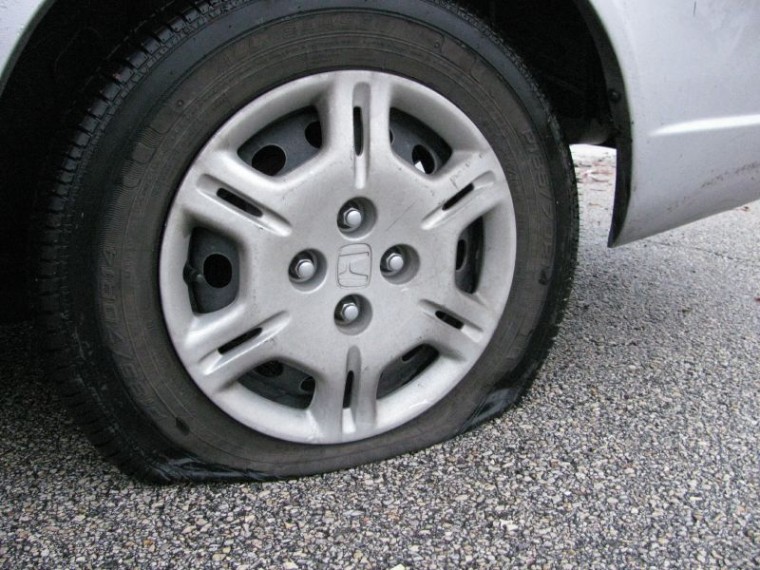 It will balance and seal your tire by evenly coating the inside surface of your tire. If your tire suffers a puncture while you’re riding, the centrifugal force of your rotating tire and the internal air pressure will move the Ride-On sealant into the hole. This will instantly seal it. This will work on punctures that are up to 1/4-inch in tubeless tires and 1/8-inch in tube tires.
You’ll like that this sealant turns your tires into self-sealing tires. They’ll also eliminate the need for ugly wheel weights. This sealant is specifically designed for use in high-speed tires. It’ll improve the performance of your motorcycle tires by dampening road vibration and noise.
It will balance and seal your tire by evenly coating the inside surface of your tire. If your tire suffers a puncture while you’re riding, the centrifugal force of your rotating tire and the internal air pressure will move the Ride-On sealant into the hole. This will instantly seal it. This will work on punctures that are up to 1/4-inch in tubeless tires and 1/8-inch in tube tires.
You’ll like that this sealant turns your tires into self-sealing tires. They’ll also eliminate the need for ugly wheel weights. This sealant is specifically designed for use in high-speed tires. It’ll improve the performance of your motorcycle tires by dampening road vibration and noise.
This tire sealant comes in a variety of sizes based on your needs: 8, 16, or 32 ounces or a one-gallon container. It will instantly seal your pneumatic tires and tubes. It protects against thorns, screws, and any other sharp objects. To use, extend the included hose and attach it to your tire valve. Then use the reliable pump action nozzle to dispense the sealant into your tire.
What’s nice about this sealant is that it specifically states that it’s safe for use with a variety of metals. This includes chrome, steel, and alloys used in wheel making. You can confidently use this sealant without worrying that it will ruin your wheels. It also stays liquid and won’t corrode or cause rust.
It will instantly seal your pneumatic tires and tubes. It protects against thorns, screws, and any other sharp objects. To use, extend the included hose and attach it to your tire valve. Then use the reliable pump action nozzle to dispense the sealant into your tire.
What’s nice about this sealant is that it specifically states that it’s safe for use with a variety of metals. This includes chrome, steel, and alloys used in wheel making. You can confidently use this sealant without worrying that it will ruin your wheels. It also stays liquid and won’t corrode or cause rust.
The Slime 50107 Kit contains two distinct elements: a powerful tire inflator and the emergency tire repair sealant. Instead of having to use a jack to change out the punctured tire, leave that hassle behind. The sealant is tire sensor safe and works well with standard car tires. The Slime tire sealant repairs tread area punctures up to 1/4-inch in diameter. Along with the kit’s included inflator, you can repair and inflate the tire within 15 minutes. Simply plug the tire inflator into your vehicle’s 12-volt accessory power outlet to get it started. It features a quick connect air hose and a built-in tire pressure dial gauge. The 16-ounce bottle of the emergency non-toxic tire sealant instantly seals punctures. The process is simple and hassle-free.
However, some users have experienced issues with the product going dead and not working when they needed it. Some actually lost more air after using this sealant.
Instead of having to use a jack to change out the punctured tire, leave that hassle behind. The sealant is tire sensor safe and works well with standard car tires. The Slime tire sealant repairs tread area punctures up to 1/4-inch in diameter. Along with the kit’s included inflator, you can repair and inflate the tire within 15 minutes. Simply plug the tire inflator into your vehicle’s 12-volt accessory power outlet to get it started. It features a quick connect air hose and a built-in tire pressure dial gauge. The 16-ounce bottle of the emergency non-toxic tire sealant instantly seals punctures. The process is simple and hassle-free.
However, some users have experienced issues with the product going dead and not working when they needed it. Some actually lost more air after using this sealant.
Whether you drive a car or truck or ride a motorcycle, STP Tire Fix Sealant and Inflator works well without any tools required. The non-flammable formula seals punctures that are up to 1/4-inch in diameter, it is easy to clean up with water, and it will hold air for as long as three days.
The product is also safe to use with tire pressure monitoring sensors. We like that this product is so easy to use: just fill up the tire to seal and inflate it, and go. Sixteen ounces fills a standard-sized tire, while 20 ounces fills larger tires. Overall, it's great for emergencies and is a short-term solution. The company recommends going to a repair shop for inspection and a permanent fix within a couple of days after application.
The non-flammable formula seals punctures that are up to 1/4-inch in diameter, it is easy to clean up with water, and it will hold air for as long as three days.
The product is also safe to use with tire pressure monitoring sensors. We like that this product is so easy to use: just fill up the tire to seal and inflate it, and go. Sixteen ounces fills a standard-sized tire, while 20 ounces fills larger tires. Overall, it's great for emergencies and is a short-term solution. The company recommends going to a repair shop for inspection and a permanent fix within a couple of days after application.
Slime Emergency Tire Repair Sealant is well-known in the industry and can repair screw or nail punctures up to 1/4-inch long. It can be used on cars, trucks, SUVs, ATVs, RVs, and more. It includes a valve core removal tool to make the process easier. For a slightly more budget-friendly option, consider the equally effective Fix-A-Flat Tire Sealant and Car/SUV Tire Inflator.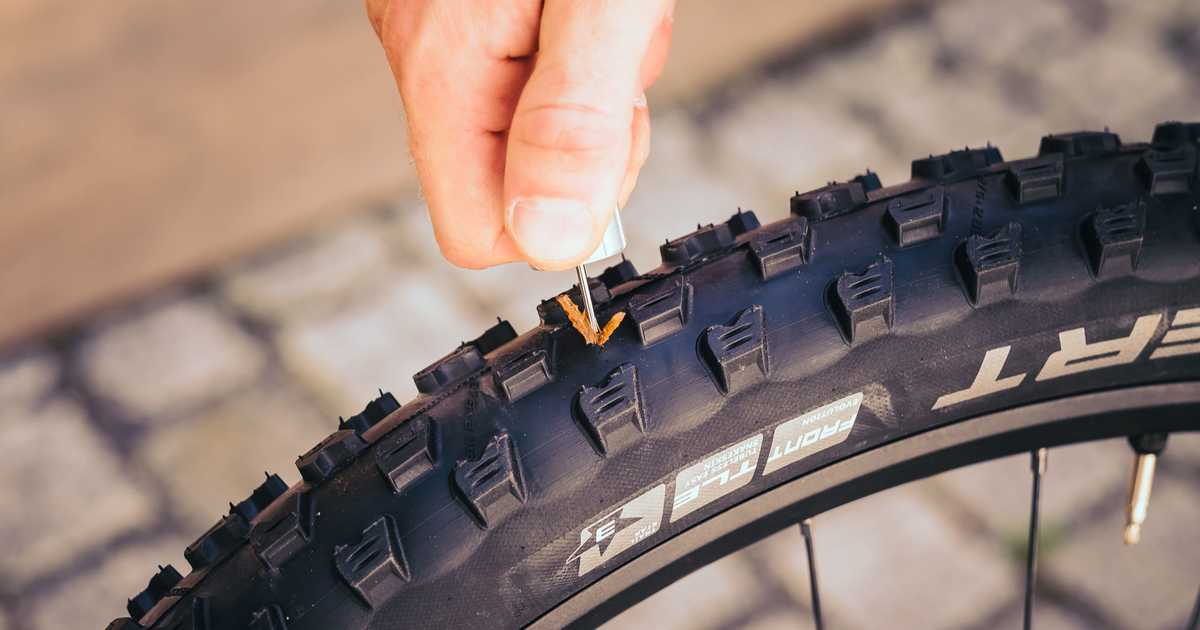
Aerosol tire sealant is one of only two types. A single-use product, aerosol sealant is for emergency repairs that will allow you to drive short distances on a punctured tire. It comes in a bottle that sprays, allowing a simple application to fill holes in the tire with great accuracy. When you spray the product into the valve, the punctured tire will inflate. The formula coats the inside of the tire to plug any leaks or holes.
The second type of sealant for a punctured tire comes in the form of a thick gel. Using the gel option can be a bit more difficult than the aerosol tire sealant, as it is harder to put in place. Plus, it can be messier due to its slimy substance. To use the gel sealant, you will usually need tools or equipment to make sure the tire is properly sealed and no longer leaking air.
Many tire sealants are very affordable and cost between $10 and $20. These products are often at least 16 ounces in size and work as promised. They are no-frills, but they get the job done. If you spend upwards of $60, you will often find much larger sealant containers or those that are part of a kit, which can include items such as tire inflators. If you have room in your vehicle for a kit, it may be worth storing one in your trunk due to the added features, such as accessories for inflatable and carrying bags.
You’ve got questions. The Drive has answers.
Tire sealants are for temporary use and not a permanent solution. The tire sealant’s purpose is to get you to the nearest gas station, automotive shop, or dealership to fix the tire. Depending on the amount of damage to the tire, you may need to get a brand-new tire put on the vehicle.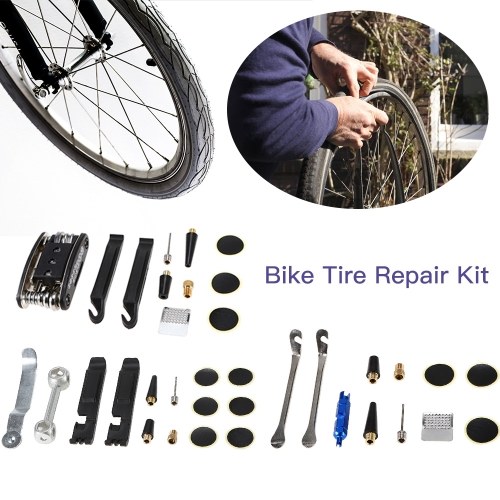
Tubeless tire sealant should last an average of two-six months. However, the life span depends on several factors, such as temperature, humidity, driving frequency, tire casing thickness, and the number of punctures.
This depends on the type of tire sealant and the brand. Each product should state how long they last, but generally they can last up to two years before needing to replace the tires.
A: This varies on the size of the tire you are trying to fill the puncture in. A lawn mower tire is smaller and therefore doesn’t need that much product. However, a Jeep tire is larger and will typically need an entire bottle of tire sealant.
A: You inject the tire sealant through the valve or tire nozzle.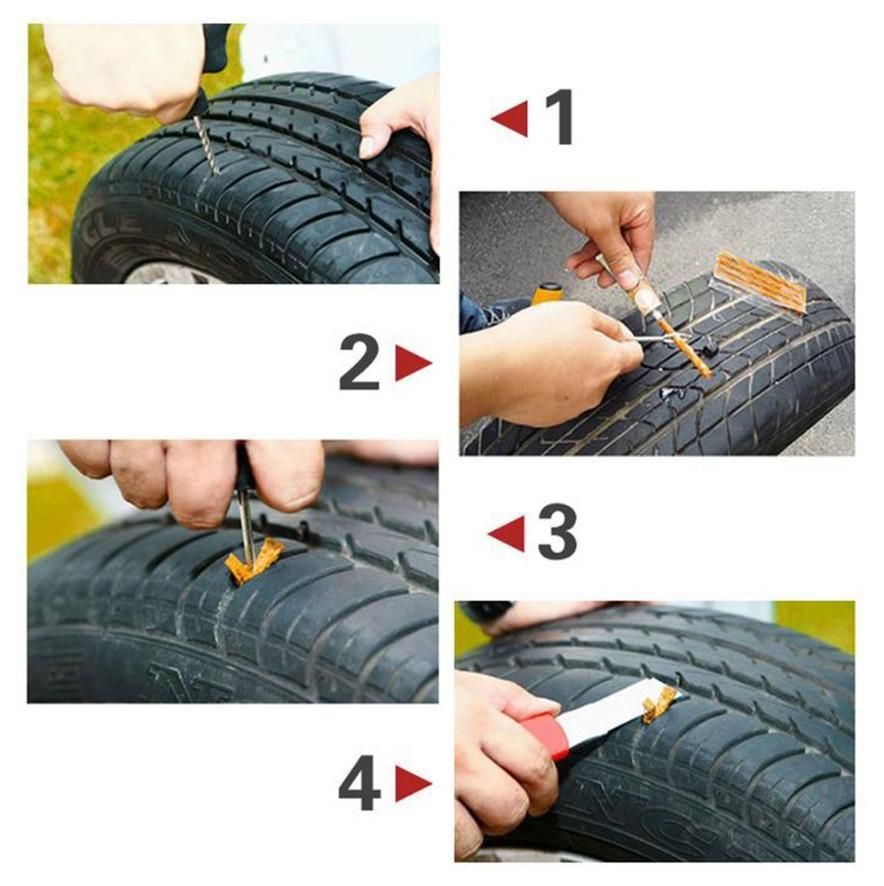 After completing that step, you then fill the tire with air until it is at the required amount.
After completing that step, you then fill the tire with air until it is at the required amount.
Statistics show that on average every driver will experience up to 5 flat tires in their lifetime. To make matters worse for when you do have a flat tire, you just might discover that that new car you bought recently does not come with a spare tire. In fact, Torque News writer John Goreham recently posted how that vehicle makers are stealing the spares from EV owners.
The reasons for lack of a spare tire range from they weigh too much for the newer EV vehicles where range anxiety is a concern of green car enthusiasts, to unsubstantiated claims that today the chances of ever having a flat are too remote to justify the continued practice of providing all vehicles with even a smaller temp spare for emergencies. Codswallop!
According to multiple sources listed about flat tires, in the United States alone, approximately 7 tire punctures occur every second, resulting in 220 million flat tires per year.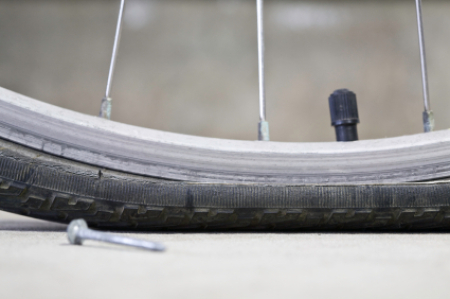
Your Options For a Flat Tire Problem
So how can you prepare yourself for those times you will have a flat, but your car did not come with a spare tire? You basically have 4 options:
1. Buy your own spare from a company that deals in spares designed for your model of car.
2. Outfit your car with tires designed to run even when flat so that you can make it to a service station or tire center for repair or replacement.
3. Buy into a roadside assistance program that will send a service truck to your vehicle that will either repair the flat on the spot or provide a spare tire.
4. DIY with a flat tire sealant that will keep your tire adequately inflated until you can make it to a tire service center.
In this article we will look at option number four.
What Consumer Reports Has to Say About Flat Tire Sealants
Sealant Kits
Sealant kits are designed for flat tires that result from a puncture wound to the tire such as running over a nail or some other relatively small and narrow sharp object.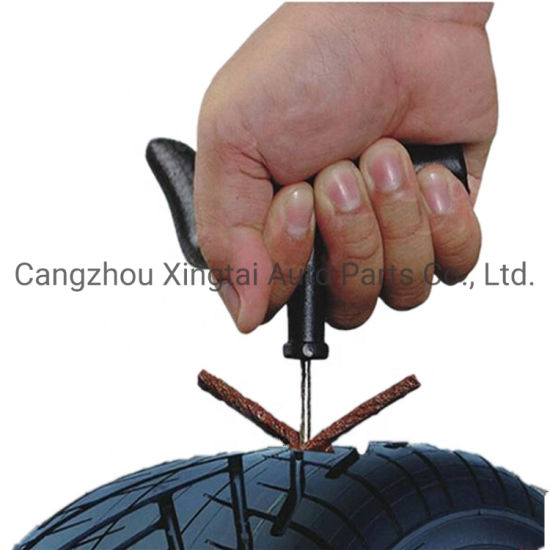 If the damage is much bigger than that such as a crack or larger hole, sealant kits don’t work.
If the damage is much bigger than that such as a crack or larger hole, sealant kits don’t work.
Typical sealant kits most motorists think of consist of just a pressurized can containing a gooey sealant that can temporarily seal a hole as the pressure within the can partially inflates the tire and forces the sealant into the puncture. However, other kits are more involved and include a small compressor for inflating the tire fully. As such, compressor kits are the more expensive option running anywhere between $24 to $80, whereas a pressurized can of sealant usually runs between $7 and $20.
There is also a third type of sealant system that consists of a liquid sealant squirted by hand through the valve stem of a flat tire and then inflated with a compressor; however the compressor is not included. The price range of a bottle of this type of sealant runs between $9 to $14.
Cons of Sealants Regardless of Repair Kit Type
• They are messy and can add to the cost when the tire is eventually repaired.
• Sealants can gum-up your tire pressure monitoring system.
• Limited to puncture holes 6mm or less is diameter.
• Might not work if multiple holes are involved.
• Limited distance of travel after sealing.
• Have to drive relatively slowly after sealing.
• May have a limited shelf life.
• Pressurized cans of sealant are at risk of exploding in a hot car.
Despite the cons of sealants, Consumer Reports recommends that choices that include a compressor are the ones more likely to result in success. Depending on how bad the leak is and how well (or not) it seals the hole, repeated use of a compressor can help you limp your way back home or to help.
Flat Tire Repair Testing Procedures
Tests were done using brand new tires with both 2.4 mm and 5.8 mm diameter nails welded to a flat metal plate with the car lowered by a lift so as to puncture all tires equally. After the punctured tires became flat, the sealant and sealant kits were used separately, with the tires inflated to 35 pounds of pressure and driven a short distance to ensure the insides of the tires were adequately coated with the sealant.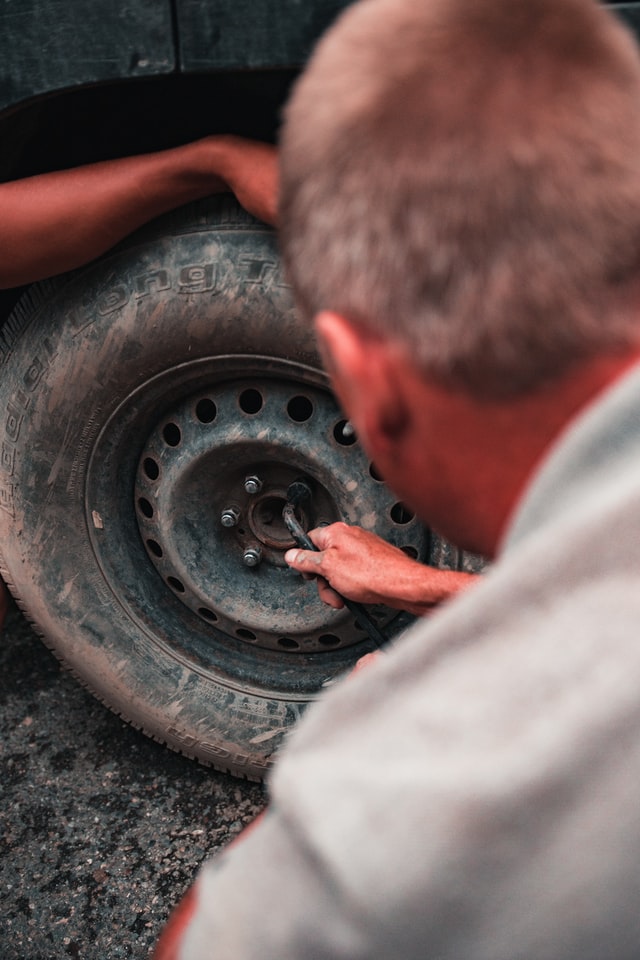
If there was no loss of air pressure, the tires were then put on the road for 50 miles, parked overnight, and the tire pressure rechecked the next day.
Tire Sealant Product and Kit Reviews
Pressurized Can Sealants
Super Tech Tire Sealant & Inflator ($7 at Walmart) ---available from Walmart and the least expensive product tested, the analysts from CR found that this one did not work---even with the smallest puncture of 2.4 mm. Similar to the Fix-a-Flat product, a compressor was needed to top off the tire pressure to the car’s recommended pressure. But, because of its poor test performance, the analysts recommend considering any of the other products evaluated over this bargain-priced sealant.
Fix-a-Flat ($8 to $20 at Walmart, AutoZone, Amazon, Home Depot, Target and Fix-a-Flat)---in spite of being a common name in pressurized-can sealants, it’s tested performance is quite poor, which greatly offsets the convenience of being the among the easiest to use. According to CR, “Fix-a-Flat was able to seal the smaller 2.4-mm puncture with a minor loss of pressure in a 24-hour period. However, it could not seal the 5.8-mm puncture, and it could not inflate the tire without topping off with a compressor.” Another mark against it is that if you drive a truck or SUV you will have to buy the more expensive larger can size.
According to CR, “Fix-a-Flat was able to seal the smaller 2.4-mm puncture with a minor loss of pressure in a 24-hour period. However, it could not seal the 5.8-mm puncture, and it could not inflate the tire without topping off with a compressor.” Another mark against it is that if you drive a truck or SUV you will have to buy the more expensive larger can size.
Liquid Tire Sealants
Slime Tire Sealant Thru-Core Technology ($9 to $14 found at Ace Hardware, AutoZone and Walmart) --- Like the Fix-a-Flat pressurized can, this non-pressurized sealant was able to seal a 2.4 mm hole, but it failed on the 5.8 mm puncture. Plus, it requires a portable tire inflator, making the Fix-a-Flat pressurized can a better (but tire pressure limiting) inexpensive solution.
Tire Sealant Kits (Compressor Containing)
airMan ResQ Pro + ($80 found at Grainger)---a kit that has the compressor doing the hard part for you by feeding the sealant directly into the tire, this kit was found to easily seal the large 5.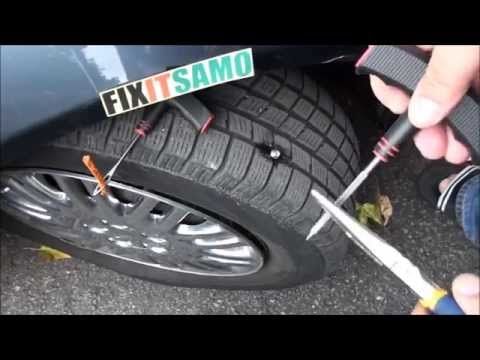 8-mm puncture with the added plus that it inflated flat tires quicker than the other products tested. A no-assembly, easy-to-use, self-contained and complete kit, this was the favorite among the analysts.
8-mm puncture with the added plus that it inflated flat tires quicker than the other products tested. A no-assembly, easy-to-use, self-contained and complete kit, this was the favorite among the analysts.
airMan ResQ Tire Repair Kit ($55 at Amazon)---this little brother to the airMan ResQ Pro + has similar performance to its bigger brother, but it requires assembly of the sealant container to the compressor as well as disassembly afterward. The opinion of the analysts is that spending the extra $25 makes the Pro+ a better choice of the two.
Slime Smart Spair Emergency Flat Tire Repair Kit ($24 to $40 found at Walmart, Amazon, Ace Hardware, Advance Auto Parts, Sportsman’s Warehouse and Slime)---this is a less-expensive compressor kit that was successful in sealing a large 5.8-mm puncture with ease. However, the sealant is not self-feeding via the compressor and thereby requires removing the valve stem and then squirting the sealant into the flat tire by hand.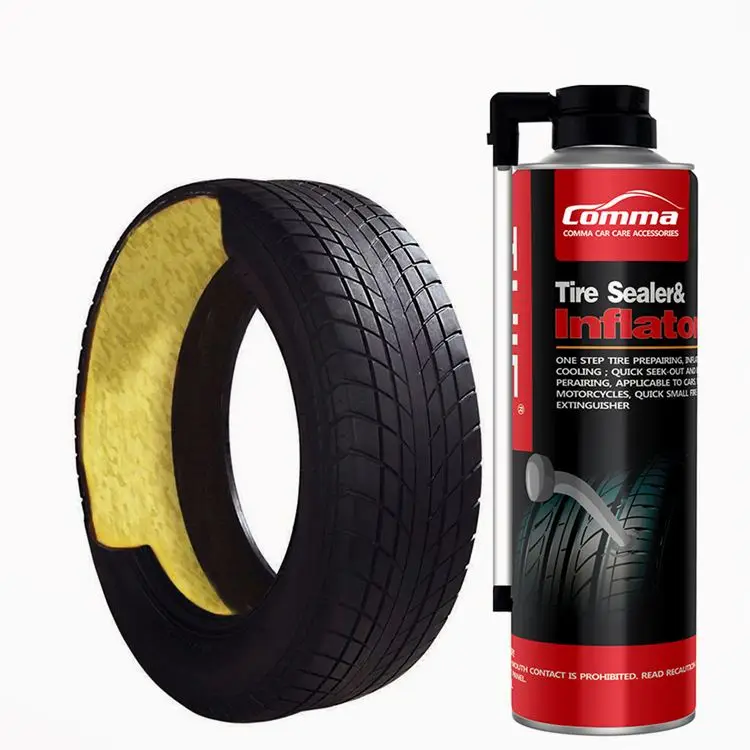 Being more cumbersome to use than the two aforementioned airMan products, the analysts did not view the cost savings worth the added bother.
Being more cumbersome to use than the two aforementioned airMan products, the analysts did not view the cost savings worth the added bother.
Slime Flat Tire Repair Kit Digital Series ($35 to $55 found at Walmart, AutoZone and Amazon)---although containing a built-in pressure gauge and feeding the sealant into the tire via the compressor like the airMan kits, the analysts reported mixed reviews of its performance: it would seal both 2.4 mm and 5.8 mm punctures---but not always, and air loss after sealing was not the best. They determined that either of the two previously listed airMan products would be their preferred choice over this tire repair kit product .
Final Determination
The analysts recommend kits containing a compressor over just sealants in either bottle form or pressurized cans. They observed that:
• Tire sealant kits were far superior to pressurized-can sealants.
• The kits were able to seal a larger puncture and included a compressor to inflate the flat tire to the recommended tire pressure.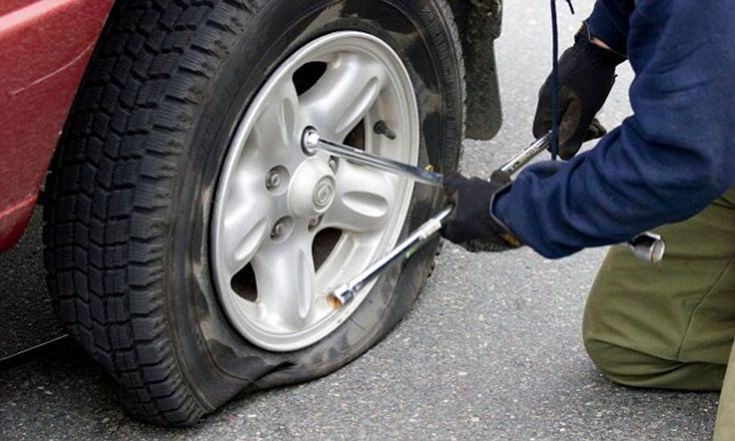
• Pressured cans of sealant will not inflate tires adequately enough for safe road travel.
• With the exception of the Super Tech Tire Sealant, both the Fix-a-Flat and the Slime Tire Sealant do seal at least the smaller of the puncture holes, but without a compressor handy (and because of the cons listed with pressurized can products) they are not recommended by the analysts of Consumer Reports.
Be sure to watch for additional future articles about saving on car repairs and tire repair and used car savings recommended from consumer testing services, as well as some DIY tips on fixing your car.
Coming Up Next: Consumer Reports Goes After Tesla and Beta 9 FSD.
Timothy Boyer is Torque News Tesla and EV reporter based in Cincinnati. Experienced with early car restorations, he regularly restores older vehicles with engine modifications for improved performance. Follow Tim on Twitter at @TimBoyerWrites for daily Tesla and electric vehicle news.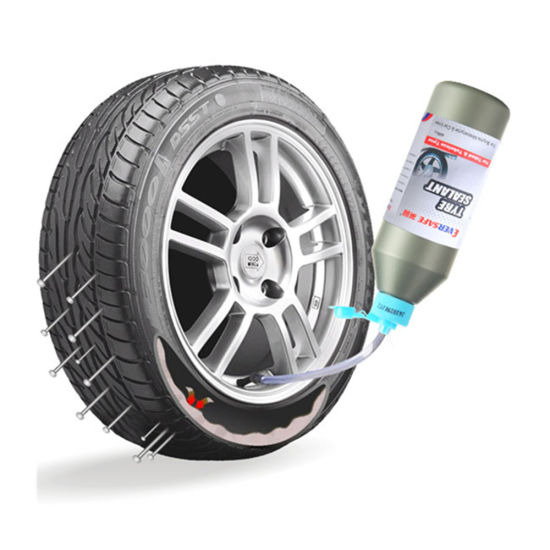
Photo by Kenan Reed on Unsplash
A flat tire affects many motorists throughout the life of their vehicle. This can happen after an impact, due to poor tire pressure, or due to a foreign object. It can be a fast puncture that is easy to notice, or, conversely, a slow puncture that is sometimes difficult to notice.
La puncture This is a disease that can affect any tire: a car tire, of course, but also a bicycle, for example. A puncture is determined by the wear on a tire, usually a punctured one, which then deflates.
But there are actually different types and causes of punctures, including:
 ) that pierces the tire, usually at tread level.
) that pierces the tire, usually at tread level. We also need to distinguish fast puncture , as it is due to shock, from what is called slow puncture . This is characterized by slow deflation, which is sometimes difficult to notice. In fact, loss of tire pressure while driving is normal (approximately 0.1 bar per month).
But a greater loss of pressure should alert you. Therefore, we recommend checking the tire pressure once a month.
When a puncture occurs suddenly, it is usually difficult to miss. Whether it's a curb crash or a tire explosion on the highway, you can't miss it. However, sometimes finding a slow puncture can be more difficult.
Every month your tires lose about 0. 1 bar pressure. If you notice a significant and persistent loss of pressure, it could be a puncture. If it is installed in your vehicle, the tire pressure warning light may come on indicating a problem.
1 bar pressure. If you notice a significant and persistent loss of pressure, it could be a puncture. If it is installed in your vehicle, the tire pressure warning light may come on indicating a problem.
Start by repeating the pressure and make sure the fall continues. Once this is confirmed, inspect the tire (sidewall and tread) for any foreign objects that may have pierced it: a screw, a nail, various debris.
If this does not help, pour soapy water or Leak Detection Fluid on the tire and look for bubbles indicating air is escaping.
A puncture immobilizes the vehicle, especially if it is a quick puncture that will immediately deflate the tire. In order not to call a tow truck and not give yourself time to go to the garage, the tire can be repaired, depending on the nature of the puncture, or the wheel can be replaced.
Material:
Then jack up the vehicle with the jack supplied with the spare wheel and finish removing the nuts. Then remove the wheel to replace it. However, be careful if it's a pancake: do not exceed 80 km / h and quickly replace it with a real tire.
If it is a tubeless tire and the puncture is small and on the tread, it can be repaired tire sealant . If the gap is too large or located on the sidewall, you will have no choice but to replace the wheel.
To repair a puncture, remove the valve from the tire and place tire sealant on the nozzle. Pour it completely out of the tire and drive a few kilometers to ensure that the product is well distributed on the inside of the tire. Please note: Tire sealant is only a temporary solution.
Pour it completely out of the tire and drive a few kilometers to ensure that the product is well distributed on the inside of the tire. Please note: Tire sealant is only a temporary solution.
Finally, there are puncture repair kits that can consist of Highlights , Plaster or Compressor and Blockage . Like tire sealant, these kits are temporary fixes that will get you repaired by the time you get to the garage to change your tire.
Some punctures can be repaired: in this case, it is not necessary to change the tire immediately. Depending on whether you have to remove the wheel for repair, calculate the cost From 20 to 30 € about. This price includes tire balancing.
If the puncture cannot be repaired, the tire will need to be replaced. But be careful: the difference in wear of two tires on the same axle cannot exceed 5mm . In other words, both tires may need to be replaced.
But be careful: the difference in wear of two tires on the same axle cannot exceed 5mm . In other words, both tires may need to be replaced.
The price of a tire depends on the brand, size and category (summer / winter). Count From 30 to 60 € for a tire. Add to that the cost of assembly and balancing (approximately 15 € per tyre) and possibly rims.
Now you know what punctures can occur on a car tire. You also know how to identify a slow puncture and how to act in the event of a puncture. We remind you that all these repairs are temporary and after a puncture it is necessary to contact a mechanic.
If you're experiencing a terrible apartment, it could be caused by one of the many possible culprits. The solution to your apartment depends on the cause of this problem. Here is Chapel Hill Tire's guide to flat tires and how to fix them.
How do nails get into tires? This is a surprisingly common problem for drivers.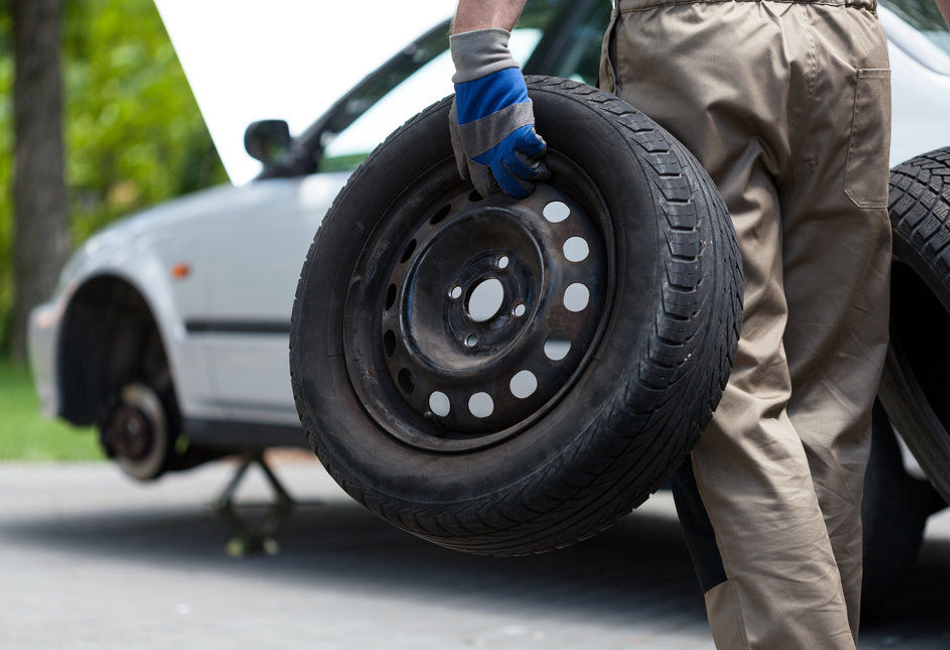 Nails can be thrown to the side during construction or fall out of pickup trucks. Since they are usually left lying on the ground, it may seem unlikely that they can puncture tires. If the car in front hits a nail, it can easily get stuck in one of your tires. Similarly, your rear wheels are more likely to catch on a nail if the front wheels toss it up.
Nails can be thrown to the side during construction or fall out of pickup trucks. Since they are usually left lying on the ground, it may seem unlikely that they can puncture tires. If the car in front hits a nail, it can easily get stuck in one of your tires. Similarly, your rear wheels are more likely to catch on a nail if the front wheels toss it up.
In addition, you may notice that most of the road debris ends up on the side of the street. If your tire gets close to an edge or pulls over, it can easily find nails, screws, and other hazards that were deliberately left behind. Not only are these hazards more common on the side of the road, they often do not lie as flat as they would on the level surface of the street. This makes your car an easy victim of the unfortunate flat tire.
The solution is relatively quick and simple: tire repair. First, you must find the puncture wound and determine that it is indeed a problem with your tires. Then you must remove the nail, patch the tire, and refill the tires. Chapel Hill Tire experts round it out. tire service for as little as $25, saving you the cost of a fix kit, the time and labor of repairs, and the chance that something could go wrong that further damage your tire.
Chapel Hill Tire experts round it out. tire service for as little as $25, saving you the cost of a fix kit, the time and labor of repairs, and the chance that something could go wrong that further damage your tire.
Low tire pressure can be caused by a flat tire , but it can also create flat tires otherwise it can be good. Your tires need to be refueled regularly to keep them working properly and maintaining their structural integrity. If you don't inflate your tires for a long time or don't repair a punctured tire quickly, you risk getting a serious puncture. Driving with low tire pressure results in a wider range of your tire's surface area touching the ground. It also weakens your tires and can damage them internally, making you more vulnerable to punctures as your sidewall wears out.
Maintaining proper tire pressure is essential to prevent this type of flat tire.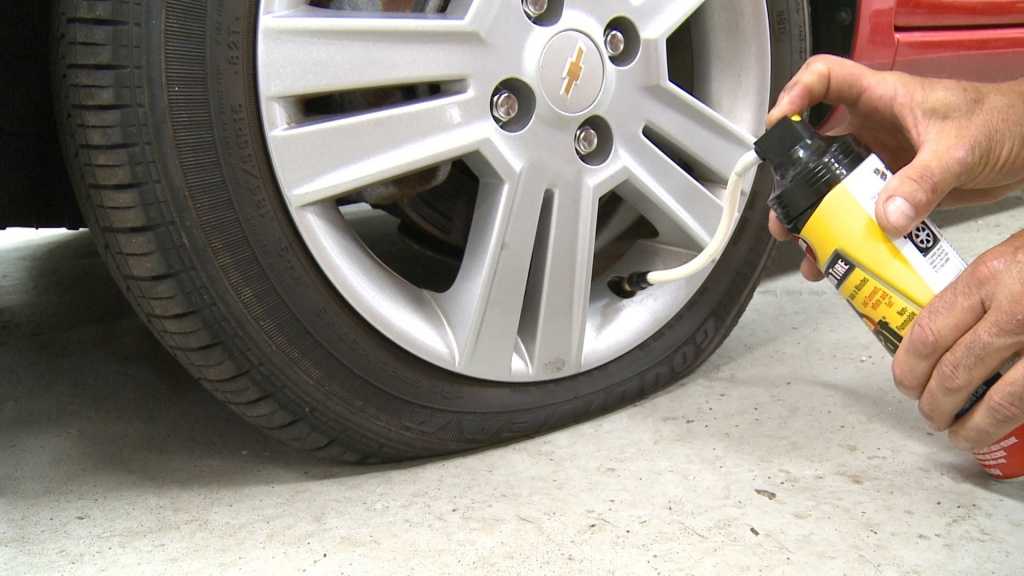 An experienced mechanic, like the one at Chapel Hill Tire, will fill your tires to the correct pressure every time you visit for an oil change or tire change. If a puncture has already been created, the tire technician will first attempt to repair the tire, but depending on the extent of the damage, it may need to be replaced.
An experienced mechanic, like the one at Chapel Hill Tire, will fill your tires to the correct pressure every time you visit for an oil change or tire change. If a puncture has already been created, the tire technician will first attempt to repair the tire, but depending on the extent of the damage, it may need to be replaced.
Conversely, too much pressure can also cause flat tires. Over-inflated tires not only impair the driving performance of the vehicle, but can also cause serious damage. Your tires will wear unevenly when over-inflated and subject to increased inflation pressure. Depending on the severity of overinflation, you can create a wide range of tire and puncture problems. In the worst case, excessive pressure can destroy your tire from the inside. Like a balloon, when you overfill it, your tire may burst.
In severe cases, an over-inflated tire can cause it to burst severely.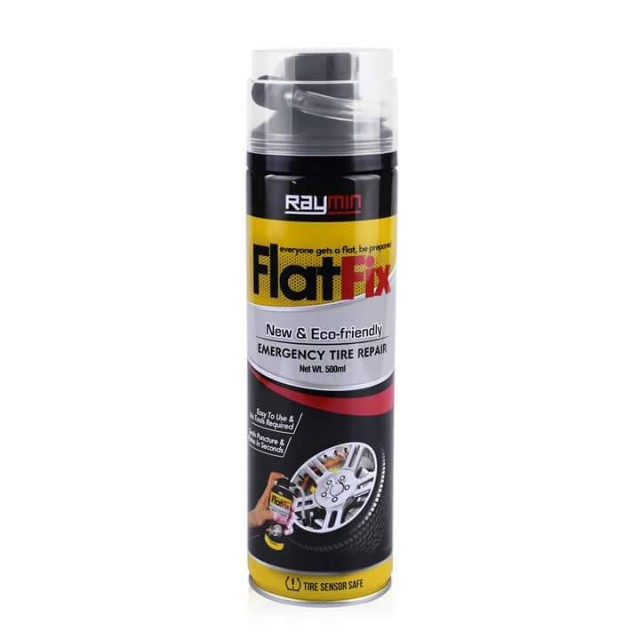 This type of flat tire is beyond repair. However, if your tire has not been severely damaged, a professional can save it. This problem is easy to prevent. Use a pressure gauge when filling tires and do not exceed the recommended tire pressure. Or let the Chapel Hill Tire experts fill it out for you.
This type of flat tire is beyond repair. However, if your tire has not been severely damaged, a professional can save it. This problem is easy to prevent. Use a pressure gauge when filling tires and do not exceed the recommended tire pressure. Or let the Chapel Hill Tire experts fill it out for you.
The infamous pothole is a major culprit in flat tires. Severe road damage can easily undermine the health of your tires. They can puncture or wear out quickly, especially if you regularly hit those inevitable potholes on your daily commute. In the worst case scenario, a pothole can damage your vehicle. rim or reset tire balance. This will break the seal and bleed the air out of your tires (besides significantly affecting your car's performance).
Some tire problems simply cannot be avoided. Rolling around a pothole is not worth causing an accident. However, by being careful and skipping potholes when they can be safely avoided, you can prevent a puncture or serious tire damage.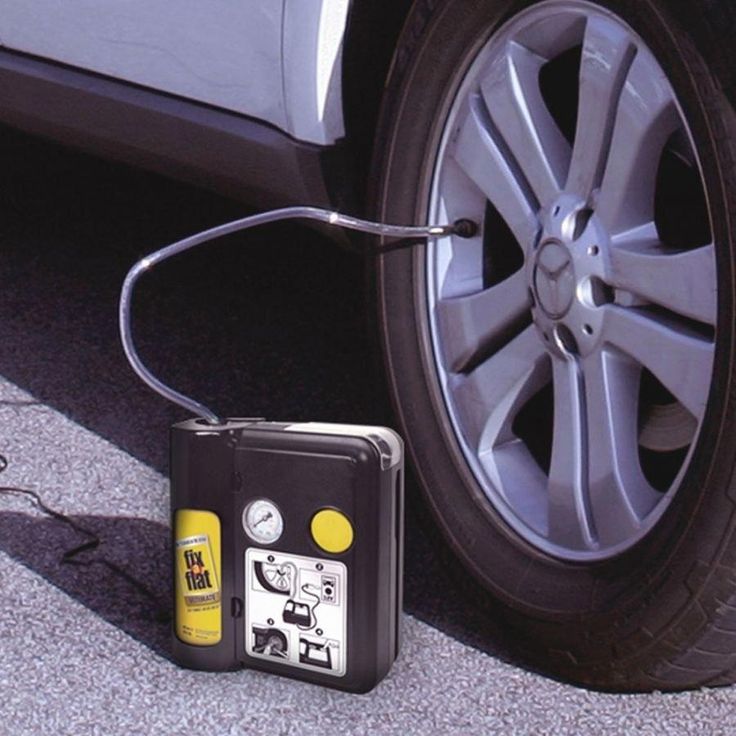
You probably encounter the same bumps and potholes on your daily commute. This repetition can wear out the same parts of your tires over and over again. Routine tire rotation can prevent this uneven wear and help your tires fight potholes for as long as possible. If your rim has been bent by a pothole, it can be straightened out by a tire professional. An expert can also balance or align your tires to repair any damage and prevent further problems.
When your tires wear out, even the slightest bit of road turbulence can cause a puncture. Sometimes turbulence is not required to form a puncture at all: your tire may simply fail. Most Tires last 6 to 10 years. This largely depends on the type of tires you have, the road conditions in your area, your personal driving habits and how often you drive. Worn tires are unfortunately a common source of punctures.
Trying to fix worn tires is most likely not worth your time or money.